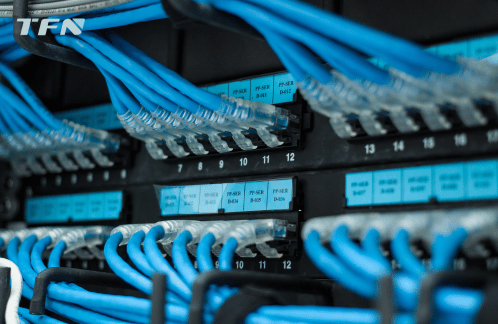What are the test items in an Ethernet interface test?
In today's highly network-dependent environment, Ethernet interface testing is crucial for ensuring stable operation and performance of network devices. Whether in an enterprise LAN, data center, or telecom carrier network, regular interface testing can effectively prevent failures and optimize performance. So, what are the common Ethernet interface test items, and what are their respective functions?
1. Basic Connectivity Test
The PING test is one of the most basic and widely used test items. It verifies IP connectivity between two devices by sending ICMP request packets and waiting for responses. In addition to regular tests, long packet PING and traffic PING can also be performed to test large packet transmission capabilities or connectivity under specific bandwidth pressures, helping to identify network latency and packet loss issues.
2. Physical and Link Layer Testing
The loop detection function quickly determines whether a loop (soft or hard) has been successfully established on the remote end, which is a prerequisite for loopback testing. The VLAN setup test verifies the port's V-tag processing capabilities in trunk or hybrid mode, ensuring correct VLAN configuration and preventing service isolation failures.

3. Traffic and Performance Analysis
Throughput monitoring monitors uplink and downlink traffic on a link in real time without disrupting services, helping administrators understand network load and promptly identify abnormal traffic or bandwidth bottlenecks.
RFC2544 testing is a standardized performance test suite that includes:
Throughput testing: measures the maximum data rate a device can handle without packet loss;
Latency testing: measures the time required for a packet to be sent and received;
Packet loss rate testing: assesses packet loss under varying loads;
Back-to-back testing: verifies a device's ability to handle bursty data flows.
These tests comprehensively assess the performance limits of network equipment and are essential for acceptance and maintenance.
4. Network Discovery and Topology Analysis
IP discovery uses packet capture analysis to identify active IP and VLAN information on the network. ARP scanning is used to discover the IP and MAC addresses of all active devices on the intranet and detect anomalies such as IP conflicts.
Subnet topology discovery leverages the SNMP protocol to automatically draw a network device connection diagram, identifying switches, routers, hosts, and other devices and their interconnections, greatly improving network visualization and troubleshooting efficiency.
5. Protocol and Service Simulation Testing
DHCP server testing verifies the availability of the intranet DHCP service and detects interference from rogue DHCP servers. Traceroute analyzes packet transmission paths to locate network outages or routing loops.
Conclusion
Ethernet interface testing is far more than simply checking if it's working. From the physical layer to the application layer, from connectivity to performance analysis, each test provides insight into network health. With a comprehensive Ethernet tester, operations and maintenance personnel can systematically perform these tests, quickly locating faults and evaluating performance, providing a solid foundation for stable and efficient network operation.
Whether it is daily maintenance, project acceptance or troubleshooting, mastering these test items and making good use of professional instruments are essential skills for every network engineer.
